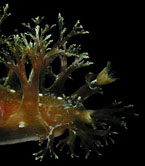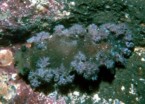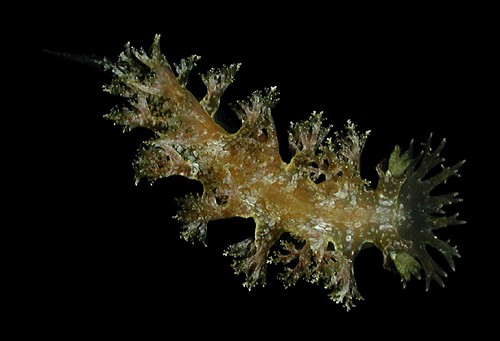_______________
Additional Photos

side

head detail

pale

violet cerata

young, 8 mm

old

with egg mass
_______________
GALLERY

|
Marionia hawaiiensis (Pease, 1860)

Maximum size: 43 mm.
Identification:
Young animals are brown, densely frosted with white flecks. The white
pigment forms a "pathway" that runs down the center of the notum and
branches onto the bases of the cerata. The rhinophore sheaths lack
ruffles and the processes on the oral veil are slender with symmetrical
downward-facing branches. As the animals mature, the white pigment
becomes patchy obscuring the "pathway," the processes on the oral veil
become thicker and more irregularly branched, the rhinophore sheaths
become ruffled and the rhinophores develop a greenish tinge. In old
animals, the cerata may develop a bluish tinge and the notum may become
weakly pustulate giving it a "quilted" appearance. Rarely, the cerata may be violet.
Natural history:
Marionia hawaiiensis
is a common species found in moderately protected to highly
exposed
rocky habitats at depths of < 1 to 5 m (< 3 to 16 ft). It feeds
on the octocoral Sarcothelia
edmondsoni. Its egg mass in a "kinked" bright orange spiral.
Hatching may occur in as little as three days in the laboratory.
Distribution:
Big Island, Maui, Oahu and Kauai.
Taxonomic notes:
This is the species listed as Tritonia
hawaiiensis Pease, 1860 in Kay, 1979 and Bertsch and Johnson,
1981. It was first reported from Hawaii in Pease, 1860 and is listed as Tritonia sp. in Edmondson, 1946.
Photo: CP:
Maliko Bay, Maui; April 30, 2005.
Observations and comments:
Note
1: ( )
|
|








